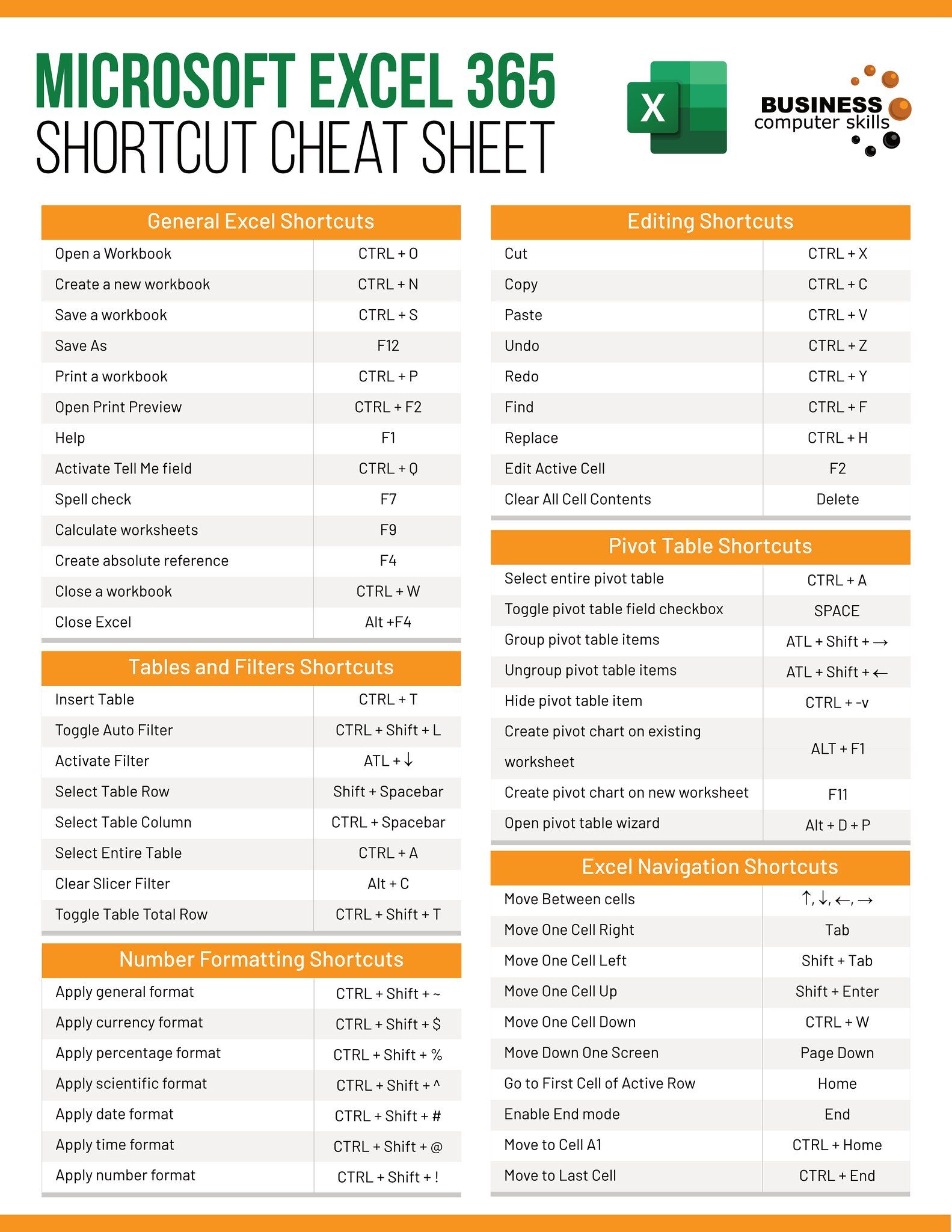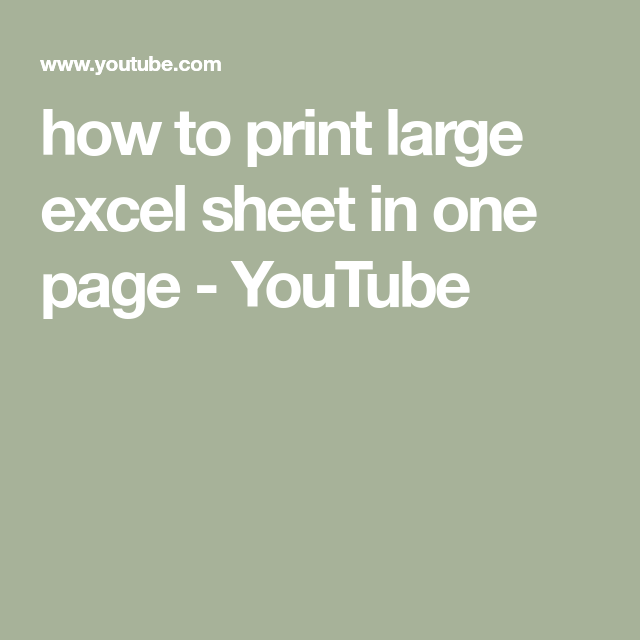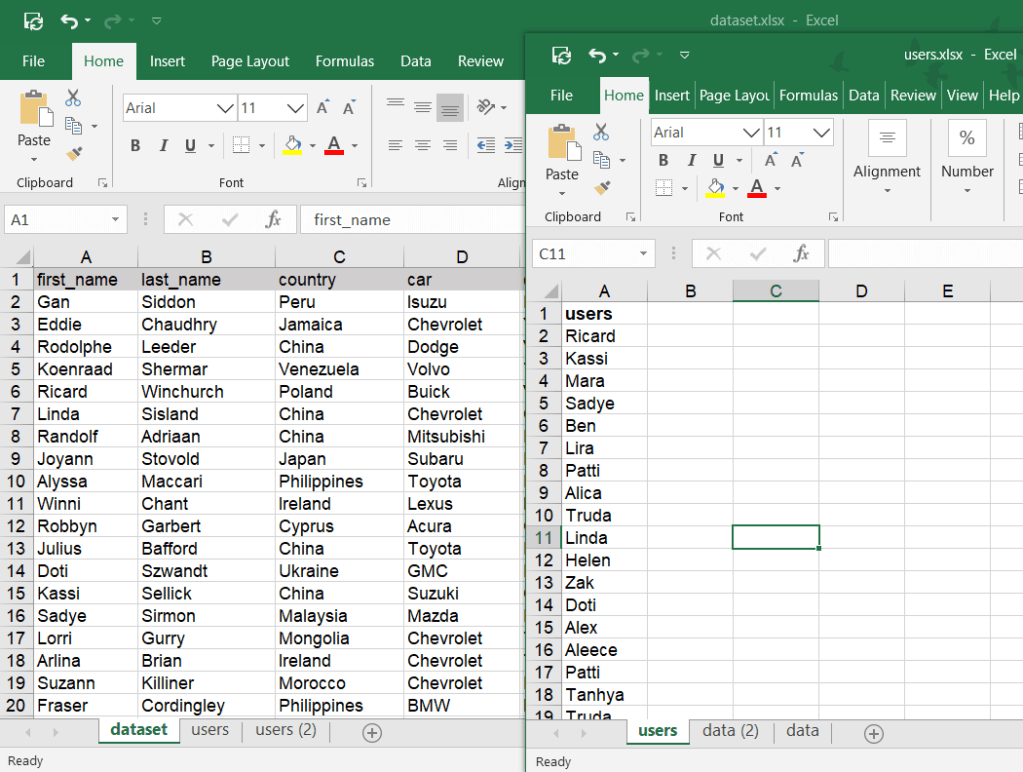5 Tips to Make Large Excel Sheets Printable Easily

Printing large Excel sheets can often feel like an overwhelming task, especially when you need to ensure that all the information is both readable and coherent on a printed page. However, with a few strategic tips and tricks, you can transform those cumbersome spreadsheets into neatly printed documents that are easy to review and share. Here's how you can make your large Excel sheets more printable with ease:
1. Optimize Sheet Layout


The first step in making any large Excel sheet printable is to optimize its layout. Here are some ways to do so:
- Adjust Column Widths: Make sure that all columns are wide enough to display the full content without truncation, but narrow enough to fit multiple columns on one page if necessary.
- Set Row Heights: Ensure rows are tall enough to display the content clearly, especially if you have wrapped text or include rows with merged cells.
- Page Breaks Preview: Use Excel’s “Page Break Preview” to see where pages will break naturally. You can manually adjust these breaks to keep related data together.
2. Use Print Titles and Areas

When dealing with extensive datasets:
- Print Titles: Set repeating rows or columns that you want to appear at the top or left of every printed page. This helps in understanding what each column or row represents, particularly useful for large datasets that span multiple pages.
- Print Area: Define a specific print area to print only the parts of your worksheet that are necessary, thus reducing unnecessary pages and clutter in the printout.
3. Scale to Fit

If your data spans more than one page horizontally or vertically, consider:
- Scaling the worksheet to fit onto one or a smaller number of pages without shrinking the text too much. You can:
- Go to the Page Layout tab.
- Select “Scale to Fit” in the Page Setup group.
- Choose either to fit to width or height, or specify a percentage to scale.
🔎 Note: When scaling, be cautious as too much scaling might make the text too small to read.
4. Control Page Setup Options

To further customize your printout:
- Margins: Adjust margins to minimize wasted space or to ensure that key information fits on each page.
- Orientation: Switching between landscape and portrait can help fit more data onto a single page.
- Gridlines and Headings: Decide whether you need gridlines or row/column headings printed, as they can make the data easier to follow.
| Option | Effect on Print |
|---|---|
| Margins | Adjust the white space around your data |
| Orientation | Change how data is presented on the page |
| Gridlines | Visual guides for data alignment |
| Headings | Reference markers for rows and columns |

5. Utilize Print Settings

Excel’s print settings offer advanced options that can greatly improve print quality:
- Print Quality: Select the appropriate print quality to balance readability with ink or toner usage.
- Paper Size: Ensure the paper size setting matches your printer’s capabilities and your document’s needs.
- Collate: When printing multiple copies, select “Collate” to keep each printed set together.
- Black and White: Printing in black and white can save on ink and ensure uniform toner usage for legibility.
Mastering these settings can not only make your large Excel sheets more printable but also ensure they are clear, organized, and professional-looking when shared or archived.
In conclusion, making large Excel sheets more printable involves thoughtful planning in layout design, careful use of print features, and strategic scaling and formatting adjustments. By following these five tips, you'll transform your complex datasets into easy-to-read printouts that convey the necessary information in a professional manner. Whether you're preparing reports for meetings, sharing financial data, or archiving records, these techniques will ensure your Excel sheets are both user-friendly and effective in their printed form.
How do I preview what my Excel sheet will look like when printed?

+
Go to the “File” menu, select “Print,” and you’ll see a preview of how your data will appear on paper. Here you can adjust settings like layout, page setup, and scale before printing.
Can I print only specific ranges of my Excel sheet?

+
Yes, you can define a print area. Go to Page Layout > Print Area > Set Print Area to highlight only the cells you want to print.
What if my data is too large to fit on one page even after scaling?

+
If scaling to fit doesn’t work, consider:
- Breaking your data into separate sheets.
- Summarizing data on the first page with detailed data on subsequent pages.
- Adjusting the page margins or using landscape orientation for more space.



